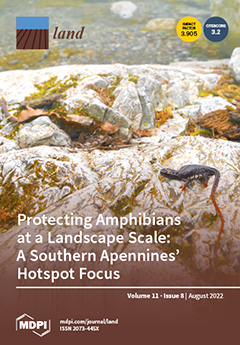As the largest carbon emitter in the world, China is facing increasing challenge to reduce CO
2 emissions. Given this issue, exploring the influencing factors is of great significance for scientific low-carbon emission policymaking. Although previous literature has explored the effects of urbanization
[...] Read more.
As the largest carbon emitter in the world, China is facing increasing challenge to reduce CO
2 emissions. Given this issue, exploring the influencing factors is of great significance for scientific low-carbon emission policymaking. Although previous literature has explored the effects of urbanization on CO
2 emissions, the impact of the space of flow on urban carbon emissions have been less explored. Due to the increasing connection between cities, its impact on urban carbon emissions cannot be ignored. Thus, this paper takes the space of flows into account as an aspect of urbanization to supplement the existing literature and empirically examines the multiple effects of urbanization on CO
2 emissions in the Pearl River Delta (PRD) urban agglomeration. By using a STIRPAT model, statistical data, and web crawler data, we examined impacts of different types of urbanization on CO
2 emissions. Our empirical results show that: (1) Within the PRD urban agglomeration, urban linkage intensity is strongly connected to urban socioeconomic growth, establishing a geographical structure with Guangzhou and Shenzhen as the double core. (2) Our results show that urbanization exerts two opposite effects on CO
2 emissions: positively connects carbon emissions with population urbanization, integrated urban linkage flow, and energy intensity, whereas economic urbanization and social urbanization are shown to be negatively correlated. However, spatial urbanization has no significant positive effect on urban CO
2 emissions. (3) It is worth noting that urban linkage flows are the second most important factor affecting urban carbon emissions after economic urbanization. Our study could formulate effective planning suggestions for future CO
2 emission reduction paths and development modes in the PRD.
Full article





